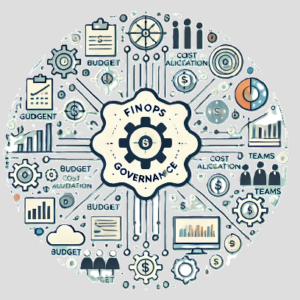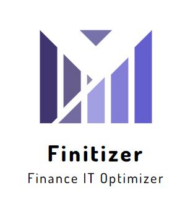FinOps Governance
Effective cloud cost governance establishes the groundwork for efficient budget management, accurate financial forecasting, equitable cost allocation, and seamless collaboration across departments. These elements are crucial for maintaining fiscal well-being and maximizing returns on cloud expenditures.

FinOps Governance Services
FinOps Governance Services includes Forecasting and Budgeting, Cost allocation and Planning, Vendor Agreement Negotiations, Cloud Unit Cost and Cost Benefit Analysis, Billing Verification, Training and FinOps Cost Benchmarking.
FinOps Governance Service Details Include:
| Feature | Description / Problem |
|---|---|
| Forecasting and Budgeting | Our budgeting and forecasting service helps financial planning by accommodating the rapid pace of innovation, distinguishing between COGS and OPEX in cloud spend, prioritizing profit margin analysis for COGS, emphasizing accurate forecasting for OPEX, and offering tailored strategies that consider team impact, cloud spend patterns, and seasonality. |
| Cost allocation and Planning | Our budgeting and forecasting service offers comprehensive solutions including cost allocation, chargeback, constant capacity planning for GCP workloads, cost optimization initiatives, CUDS recommendation analysis, show back and chargeback strategies, management of default quotas, and utilization of sustained use discounts for Google Compute Engine to ensure efficient and cost-effective cloud usage. |
| - Implement cost allocation and chargeback | |
| - Constant Capacity Planning for GCP Workloads | |
| - Identify and detailed design for cost optimization initiatives | |
| - CUDS Recommendation Analysis | |
| - Show back strategy and Chargeback strategy | |
| - Manage default quotas are in place to maintain your usage within a predetermined limit | |
| - Sustained Use Discounts for Google Compute Engine automatically lower the price for sustained workloads. | |
| Vendor Agreement Negotiations | Signing large commits is the new vendor lock-in strategy employed by cloud hyperscalers. Managing vendors is a crucial component of cloud cost control that is frequently neglected. It's a key responsibility. Given the FinOps team's understanding of both Engineering and Finance, they can ensure cost-effective decisions are made when choosing vendors and tools through a well-structured vendor management process. For successful vendor management, it's essential act as a bridge between the procurement and engineering departments. |
| Cloud Unit Cost and Cost Benefit Analysis | Organizations can extract business value from the cloud by understanding the correlation between the costs of cloud usage and the business value produced by specific use cases, such as the cost of cloud services per transaction or per user. This comprehension of unit economics empowers business leaders to make more informed decisions. |
| Teams should complete cloud cost benefit analysis before embarking on a project. On the Google platform cost analysis can be complex because multiple resources are used and we need to factor in CUDS and other discounts. | |
| Cloud Billing Verification | Google Cloud Platform (GCP) makes mistakes when applying negotiated discounts to services and SKUs. For example, enterprise discounts are not consistently applied to all SKUs. |
| FinOps Training | Train engineering and finance teams on cost-saving methods and implement systems that foster efforts to reduce expenses. |
| FinOps Cost Benchmarking | Compare a company’s FinOps benchmarks with industry benchmarks from McKinsey and other sources. Some examples: • Cloud Cost Efficiency: Tools and resources for FinOps Benchmarking often measure Cloud Cost Efficiency • Unit Costs: Regularly assess unit costs across all cloud services and resources. Resource Utilization & Efficiency: This involves tracking how efficiently resources are being used |
